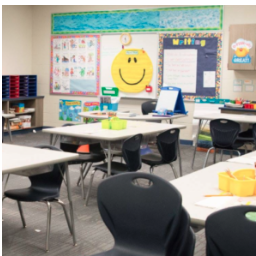There is growing evidence that as Kansas has fallen behind in educational funding, we are also falling behind in student success outcomes,” said Mark Tallman, KASB associate executive director. “We are in danger of falling from a top achieving state to average or worse,” Tallman said.
Full Report; Executive Summary; Supplemental Information
The analysis shows Kansas has maintained its 10th rank among states over numerous student academic measurements and every state that ranks higher than Kansas spends more per pupil.
But the report also shows that Kansas student outcomes have started to fall as total funding per pupil in Kansas fell behind most states since 2008.
The percent of Kansas students scoring at the basic and proficient level in NAEP tests have declined. In addition, the Kansas high school graduation rate, while 20th in the nation, has seen a lower rate of improvement over the past few years than the average of all states.
Another trouble spot is in higher education achievement.
Kansas exceeds the national average in the percentage of 18- to 24-year-olds with some college or higher, but the state’s rate of increase in this area since 2005 ranks near the bottom of states. This comes at a time when studies show within three years seven out of 10 jobs will require some post-secondary achievement and states with the highest average incomes are generally those with the most educated population.
Meanwhile, Kansas’ ranking for K-12 dollars fell from 29th to 31st between 2014 and 2015 and the percent increase in per pupil funding in between 2008 and 2015 ranked 39th and was much less than the states that outperform Kansas in education results.
“This report validates the 2017 Legislature’s action to increase school funding significantly for the first time in almost a decade,” Tallman said. “It also supports the Kansas Supreme Court’s ruling that funding has not been adequate. Finally, it adds urgency to the State Board of Education’s Kansans Can vision and goals.”
